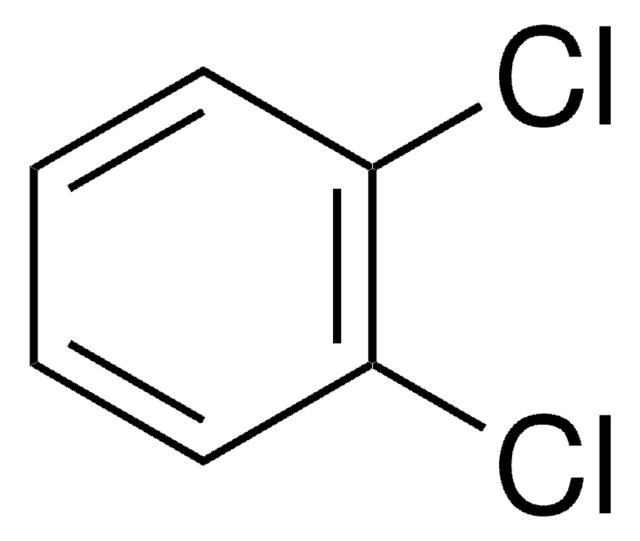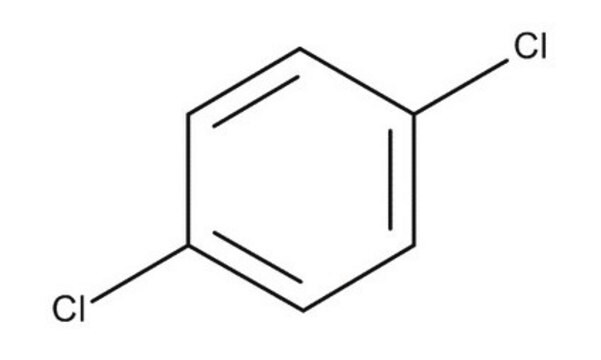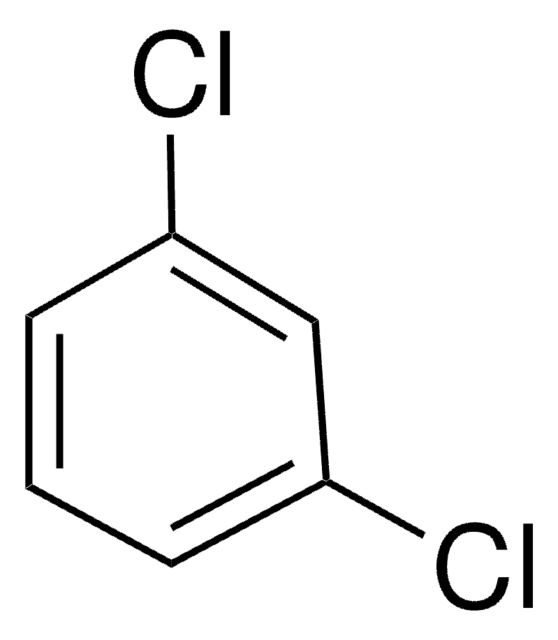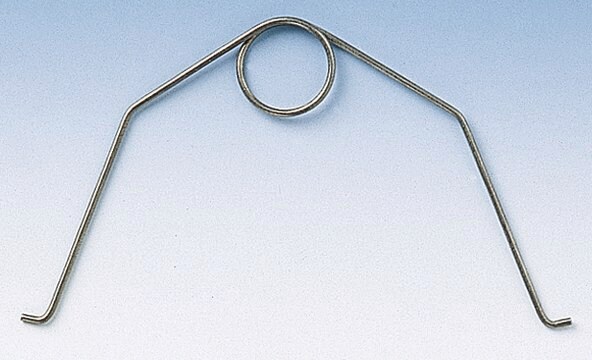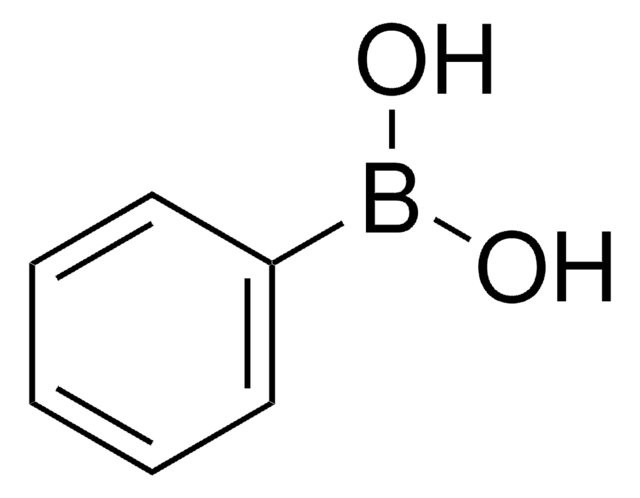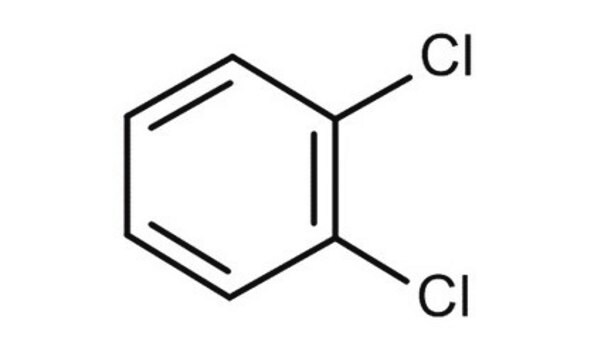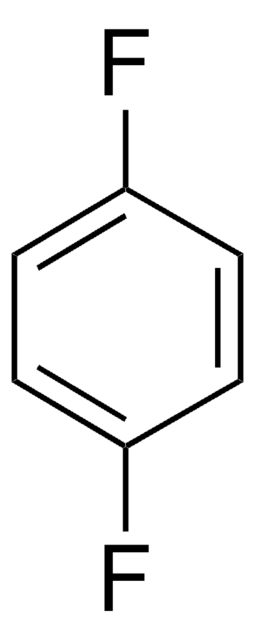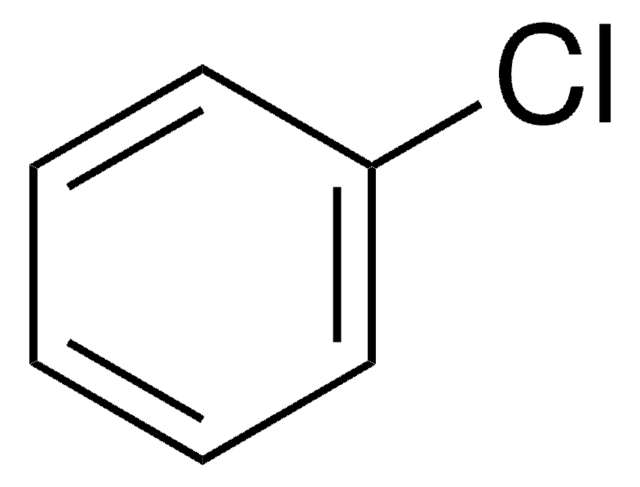D56829
1,4-Dichlorobenzene
≥99%
Sinónimos:
1,4-Dichlorobenzene, Di-chloricide, Dichlorocide, PDB, Paradichlorobenzene, p-Chlorophenyl chloride, p-Dichlorobenzene, para-Dichlorobenzene
About This Item
Productos recomendados
vapor density
5.07 (vs air)
Quality Level
vapor pressure
1.03 mmHg ( 25 °C)
assay
≥99%
form
crystalline solid
bp
173 °C (lit.)
mp
52-54 °C (lit.)
density
1.241 g/mL at 25 °C (lit.)
SMILES string
Clc1ccc(Cl)cc1
InChI
1S/C6H4Cl2/c7-5-1-2-6(8)4-3-5/h1-4H
InChI key
OCJBOOLMMGQPQU-UHFFFAOYSA-N
Gene Information
human ... CYP2A6(1548)
mouse ... Cyp2a5(13087)
¿Está buscando productos similares? Visita Guía de comparación de productos
signalword
Warning
hcodes
Hazard Classifications
Aquatic Acute 1 - Aquatic Chronic 1 - Carc. 2 - Eye Irrit. 2
Storage Class
11 - Combustible Solids
wgk_germany
WGK 2
flash_point_f
Not applicable
flash_point_c
Not applicable
ppe
Eyeshields, Faceshields, Gloves, type P3 (EN 143) respirator cartridges
Elija entre una de las versiones más recientes:
¿Ya tiene este producto?
Encuentre la documentación para los productos que ha comprado recientemente en la Biblioteca de documentos.
Los clientes también vieron
Nuestro equipo de científicos tiene experiencia en todas las áreas de investigación: Ciencias de la vida, Ciencia de los materiales, Síntesis química, Cromatografía, Analítica y muchas otras.
Póngase en contacto con el Servicio técnico